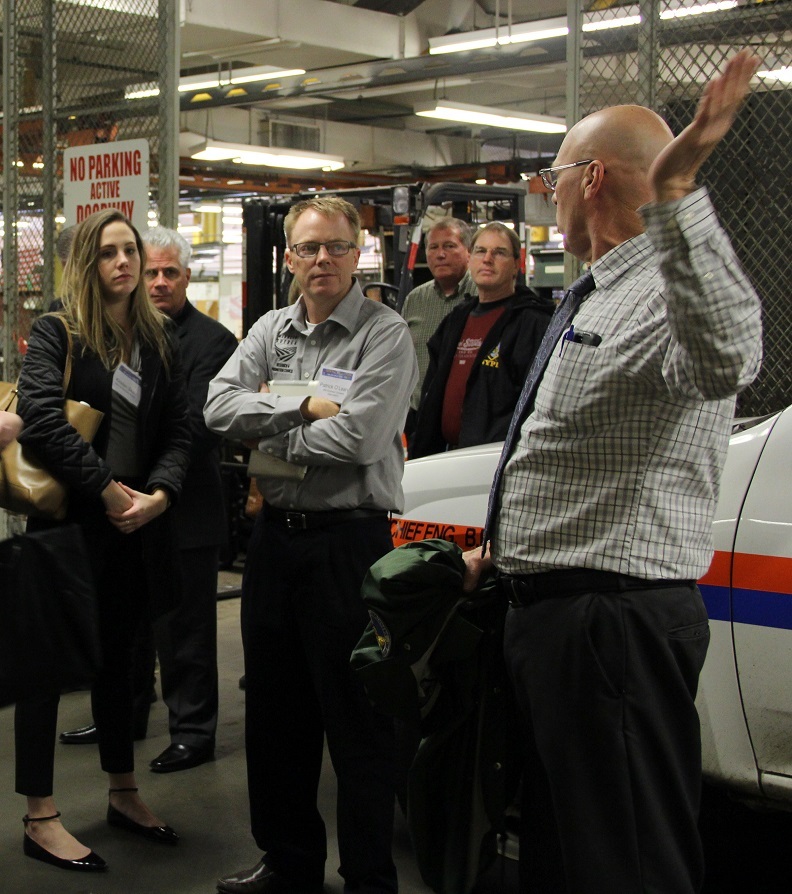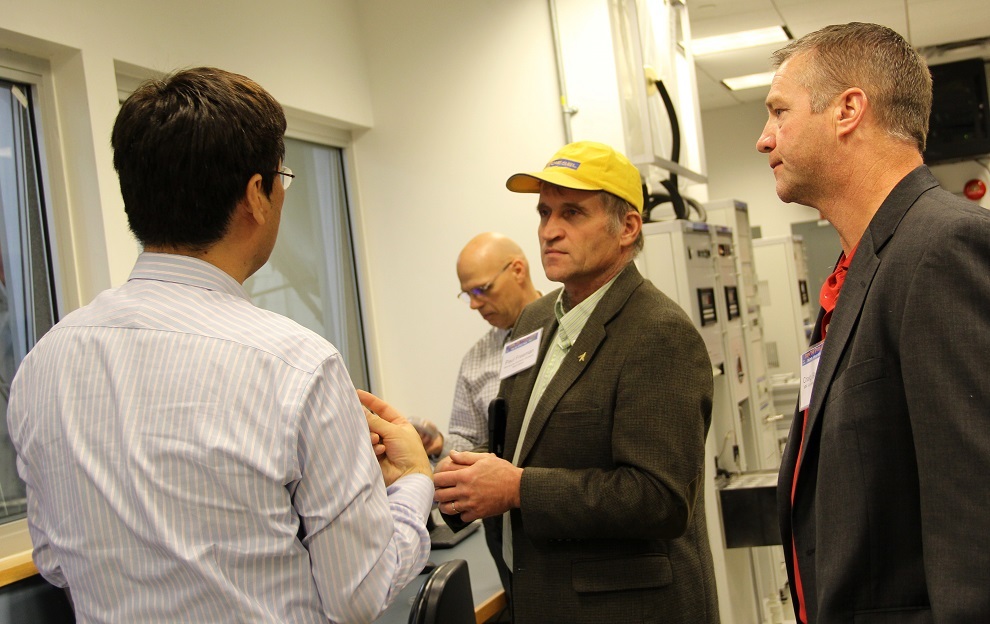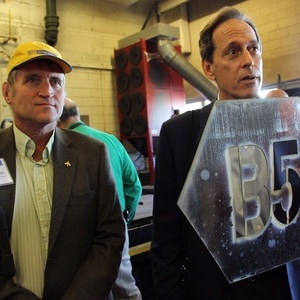Biodiesel taking a bite out of emissions in the Big Apple





Photo: Minnesota Soybean Research & Promotion Council
February 5, 2016
BY Tom Slunecka
The words of the legendary Frank Sinatra danced in my head as our group of Minnesota soybean farmers listened to an official with the Natural Resources Defense Council describe how their New York City offices were heated by biodiesel. Ol’ Blue Eyes crooning, “If I can make it there, I’ll make it anywhere,” seemed so appropriate when hearing firsthand stories about the impact of biodiesel in the Big Apple.
Our December visit to NYC was certainly an eye-opener on many levels. For those of us old enough to remember the 1970s (I thought I’d never be old enough to write that), America’s cities often fought a losing, or possibly lukewarm, battle against air pollution. The images of smog and black air rising from smokestacks could describe any number of major metropolitan areas in that decade. Many may recall the public service announcements during Saturday cartoons of the “Keep American Beautiful” campaign during this time.
Fast forward four decades, and New York City is touting the cleanest air in 50 years. According to the Mayor’s Office on Sustainability and the Mayor’s Office of Recovery and Resiliency, the city has experienced a 19 percent reduction in carbon emissions since 2005, on track to reaching an 80 percent reduction by 2050. Many give credit to the city’s Clean Heat program, which pushed for a phasing out of the more heavily polluting heating oils. A 2013 report by the city found the cleaner air prevented 800 deaths and led to 2,000 fewer emergency room visits and hospitalizations from lung problems, compared with 2008.
Biodiesel plays pivotal role
New York City Councilman Costa Constantinides is a leading biodiesel proponent, pushing the city to raise the fuel standards from B2, or 2 percent biodiesel, to B5 for non-city vehicles. Several government agencies, including the New York Department of Sanitation, the New Jersey and New York Port Authority and the NYC Department of Parks & Recreation already run on blends of B5 up to B20.
Air quality is not a political issue for Constantinides. When you have a son that suffers from asthma, you toss politics out the window. The councilman told us that the No. 1 reason a child goes to the hospital in his district is because of asthma-related issues. With that in mind, Constantinides is looking beyond the move to B5, with an eventual progression to B10, B15 and B20.
Advertisement
New York City has been a trailblazer in its approach to improving air quality. The city blends biodiesel with its standard heating fuel to create Bioheat for its buildings. They have a citywide fuel standard of B2, which will likely increase to B5 in 2016, and they are piloting a program to have all city ferries run on B5. The New York Port Authority runs B20 year around, and they have different city fleets running higher blends of biodiesel.
Heating—a longtime environmental influencer
An international environmental advocacy organization, the NRDC has been at the forefront of the movement since it was founded in 1970.
Agriculture and the environmental movement have many of the same goals; we just don’t always see eye to eye on how to accomplish those goals. One thing where we both could find agreement: the move to B100 to heat NRDC’s building has been an unqualified success.
The NRDC facilities manager was a tad skeptical at first, but testing made him a believer. He reported that there were zero fumes in the basement, and regular maintenance showed that the NRDC boiler went from 12-15 pounds of carbon soot to approximately two. Additional tests shined a light on the differences between standard diesel and biodiesel, a significant comparison regarding the burning efficiency. With No. 2 diesel, the NRDC boiler had an 86 percent efficiency rating when burned on a low flame, and an 87 percent efficiency rating when burned on a high flame. With biodiesel, the burner has a 90 percent efficiency rating on the low flame and a 93 percent efficiency rating on the high flame.
The advantages of Bioheat are clear, as it offers a safe and more complete energy-efficient burn, it is a renewable energy source that reduces emissions and is biodegradable, it may actually extend equipment life and reduce periodic maintenance intervals, and Bioheat reduces dependence on foreign oil and creates jobs in the U.S.
Advertisement
This is a ready-made market for the biodiesel industry. The oil heat industry annually distributes approximately 7 billion gallons, meaning that the inclusion of a just a 5 percent biodiesel blend in all oil heat would translate into 350 million gallons of biodiesel use.
New York City faced tremendous obstacles in its quest to improve air quality. But with great risks came great rewards. As I think of their progress, from almost 2,000 miles away, I keep reverting back to Sinatra, “Start spreading the news…”
Author: Tom Slunecka
CEO, Minnesota Soybean Research & Promotion Council
507-388-1635
tom@mnsoybean.com
Related Stories
Global digital shipbuilder Incat Crowther announced on June 11 the company has been commissioned by Los Angeles operator Catalina Express to design a new low-emission, renewable diesel-powered passenger ferry.
ATR and French SAF aggregator ATOBA Energy on June 19 signed a memorandum of understanding (MOU) to explore ways to facilitate and accelerate sustainable aviation fuel (SAF) adoption for ATR operators.
Argent Fuels, a leading provider of carbon-saving fuels in the UK, is accelerating its efforts to support a greener future. The expansion of its High Blend Biodiesel will supply to bus, coach, HGV fleets and rail in the south of the UK.
Sprague Operating Resources LLC on June 24 announced it has been selected by the New York City Department of Citywide Administrative Services to supply renewable diesel for its marine fleet, including the iconic Staten Island Ferry.
On June 17, the NYC Department of Citywide Administrative Services and the Department of Transportation announced the start of the Staten Island Ferry’s transition to renewable diesel, marked by the delivery of the first barge of fuel.
Upcoming Events










